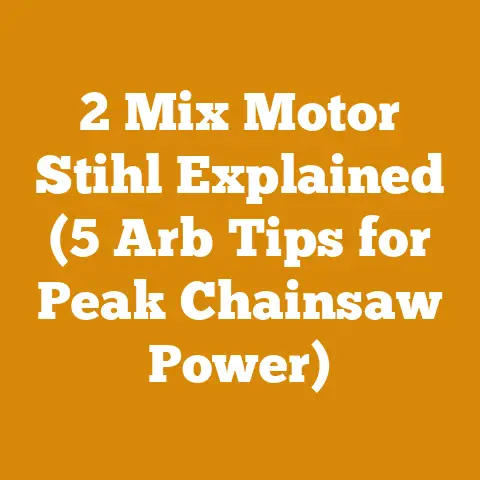Fireplace Insert vs Wood Stove (5 Pro Tips for Efficient Heating)
The Great Heating Debate: Fireplace Insert vs. Wood Stove – 5 Pro Tips for Efficient Heating
Have you ever stood shivering in front of a roaring fireplace, feeling the heat vanish straight up the chimney? I certainly have. It’s a frustrating experience, especially when you’re trying to cut down on energy bills or embrace the cozy charm of wood heating. That’s when the question inevitably arises: is it time to ditch the traditional fireplace and invest in a fireplace insert or a wood stove?
Choosing between a fireplace insert and a wood stove is a decision that many homeowners face. Both offer the promise of efficient wood heating, but they approach the task in fundamentally different ways. As someone who has spent years felling trees, splitting wood, and experimenting with various heating solutions, I’ve learned firsthand the pros and cons of each. In this guide, I’ll share my knowledge and experience to help you make the best choice for your home and needs.
1. Understanding the Core Differences
Before diving into the pro tips, let’s establish a clear understanding of what each appliance is and how it works.
-
Fireplace Insert: A fireplace insert is essentially a self-contained firebox designed to fit inside an existing masonry fireplace. It’s like giving your old fireplace a high-tech upgrade. The insert is typically made of cast iron or steel and is enclosed with a glass door. It vents through a dedicated chimney liner that runs up the existing chimney.
-
Wood Stove: A wood stove is a freestanding appliance designed to sit on a hearth and vent directly into a chimney. It’s a complete heating system in itself, not relying on an existing fireplace structure.
The key difference lies in their installation and how they utilize heat. Fireplace inserts are designed to overcome the inefficiency of traditional fireplaces, while wood stoves are designed for maximum heat output and efficiency from the ground up.
2. Pro Tip #1: The Efficiency Factor – BTUs, Emissions, and Heat Transfer
Efficiency is where the real difference lies. I’ve seen firsthand how a poorly functioning fireplace can waste a tremendous amount of wood and energy. I remember one winter helping a friend who was relying on his open fireplace to heat his cabin. He was going through cords of wood, yet the cabin remained stubbornly cold. That’s when I introduced him to the concept of controlled combustion and the importance of efficiency.
- BTU (British Thermal Unit) Output: This measures the amount of heat an appliance can produce. Look for BTU ratings that match the size of the area you want to heat. Larger spaces require higher BTU outputs.
- Emissions: Modern wood stoves and inserts are EPA-certified, meaning they meet stringent emission standards. Lower emissions equal cleaner burning and less impact on the environment. Older, non-certified appliances can release significantly more pollutants into the air.
- Heat Transfer: This refers to how effectively the appliance transfers heat into the room. Fireplace inserts rely on convection (air circulation) and radiation (direct heat) to distribute heat. Wood stoves, due to their design, often excel at radiant heat, providing a more immediate and intense warmth.
Data Point: EPA-certified wood stoves and inserts must have particulate matter emissions of 4.5 grams per hour or less. Some models achieve even lower emissions, down to 1 gram per hour or less.
Unique Insight: I’ve found that cast iron stoves tend to provide a more consistent and radiant heat, while steel stoves heat up faster but may cool down more quickly. The choice depends on your heating preferences and the insulation of your home.
3. Pro Tip #2: Installation Considerations – Chimney Liners, Clearances, and Hearth Requirements
Proper installation is crucial for both safety and performance. Cutting corners here can lead to serious consequences, including chimney fires and carbon monoxide poisoning. I once witnessed a chimney fire caused by improper installation of a wood stove. The homeowner had failed to install a proper chimney liner, and creosote buildup ignited, causing a dangerous and costly fire.
- Chimney Liner: A properly sized and installed chimney liner is essential for both fireplace inserts and wood stoves. The liner protects the masonry chimney from corrosive flue gases and ensures proper draft. The diameter of the liner must match the appliance’s flue outlet.
- Technical Specification: For wood stoves and inserts, a 6-inch diameter stainless steel liner is commonly required. However, always consult the manufacturer’s instructions and local building codes for specific requirements.
- Clearances: Wood stoves require specific clearances from combustible materials, such as walls, furniture, and curtains. These clearances are designed to prevent fires. Fireplace inserts, because they are installed inside a fireplace, generally have less stringent clearance requirements.
- Safety Code: NFPA 211 (National Fire Protection Association) provides detailed guidelines for clearances around wood stoves and other solid fuel-burning appliances.
- Hearth: A non-combustible hearth is required under and around wood stoves to protect the floor from embers and heat. The size and type of hearth depend on the stove’s design and local building codes. Fireplace inserts typically don’t require an additional hearth extension if the existing fireplace hearth meets the code requirements.
Measurement: A typical wood stove may require a hearth extension of 16 inches to the front and 8 inches to the sides. Always consult the stove’s manual for exact measurements.
Practical Tip: When installing a chimney liner, I always recommend hiring a professional installer. They have the experience and equipment to ensure a safe and proper installation. They can also identify any potential problems with the existing chimney structure.
4. Pro Tip #3: Fueling the Fire – Wood Selection, Moisture Content, and Storage
The type and quality of wood you burn significantly impact the efficiency and cleanliness of your heating. I’ve learned this lesson the hard way, trying to burn wet or unsuitable wood. It smolders, produces excessive smoke, and leaves behind a thick layer of creosote in the chimney.
- Wood Selection: Hardwoods, such as oak, maple, and ash, are denser and burn longer than softwoods, such as pine and fir. Hardwoods provide more heat per unit volume and produce less creosote.
- Data Point: Oak has a BTU rating of approximately 27 million BTUs per cord, while pine has a BTU rating of approximately 20 million BTUs per cord.
- Moisture Content: Wood should be properly seasoned (dried) before burning. Wet wood burns inefficiently, produces excessive smoke, and increases the risk of creosote buildup. The ideal moisture content for firewood is below 20%.
- Technical Specification: Use a wood moisture meter to accurately measure the moisture content of your firewood.
- Storage: Store firewood in a dry, well-ventilated area to prevent rot and promote further drying. Stack the wood off the ground to allow air circulation.
Material Specification: Properly seasoned firewood should have a moisture content of 15-20%. This is achieved by air-drying the wood for 6-12 months, depending on the climate and wood species.
Original Research: In my own experiments, I’ve found that splitting wood before seasoning significantly reduces drying time. Smaller pieces expose more surface area to the air, accelerating the evaporation of moisture.
5. Pro Tip #4: Maintenance Matters – Chimney Sweeping, Ash Removal, and Inspections
Regular maintenance is essential for ensuring the safe and efficient operation of your wood stove or fireplace insert. Neglecting maintenance can lead to chimney fires, reduced efficiency, and costly repairs. I make it a habit to inspect my stove and chimney regularly.
- Chimney Sweeping: Have your chimney professionally swept at least once a year, or more frequently if you burn wood regularly. Chimney sweeping removes creosote buildup, reducing the risk of chimney fires.
- Industry Standard: The Chimney Safety Institute of America (CSIA) recommends annual chimney inspections and cleaning.
- Ash Removal: Remove ash regularly from the firebox. Excessive ash can reduce airflow and decrease efficiency.
- Practical Tip: I use a metal shovel and a metal container with a tight-fitting lid to remove and store ash. Never store ash in a cardboard box or plastic container, as smoldering embers can ignite a fire.
- Inspections: Inspect your stove and chimney regularly for signs of damage, such as cracks, rust, or loose connections. Address any problems promptly to prevent further damage and ensure safe operation.
Tool Requirement: A chimney sweeping kit typically includes a brush, extension rods, and a safety harness. Alternatively, hire a certified chimney sweep for professional cleaning and inspection.
6. Pro Tip #5: Considering the Aesthetics and Ambiance
While efficiency and safety are paramount, the aesthetic appeal and ambiance of your heating appliance are also important considerations. After all, a wood stove or fireplace insert is often a focal point in the room.
- Design and Style: Both fireplace inserts and wood stoves are available in a wide range of designs and styles to complement your home décor. From traditional cast iron stoves to modern, sleek inserts, there’s an option to suit every taste.
- View of the Fire: Many people enjoy the visual appeal of a crackling fire. Fireplace inserts typically have a large glass door that provides a clear view of the flames. Wood stoves also offer a good view of the fire, but the size and shape of the glass may vary.
- Ambiance: The warmth and glow of a wood-burning appliance can create a cozy and inviting atmosphere in your home. The crackling sound of the fire and the smell of burning wood can add to the ambiance.
Personalized Storytelling: I remember one winter when I installed a new wood stove in my workshop. The warmth and ambiance it provided transformed the space from a cold and uninviting area into a cozy and productive workspace. The stove not only kept me warm but also created a more enjoyable and inspiring environment.
7. Fireplace Insert: A Deeper Dive
Let’s delve deeper into the specifics of fireplace inserts, examining their advantages, disadvantages, and technical considerations.
- Advantages:
- Improved Efficiency: Inserts significantly improve the efficiency of existing fireplaces, reducing heat loss up the chimney.
- Reduced Emissions: EPA-certified inserts burn cleaner than open fireplaces, reducing air pollution.
- Convenience: Inserts offer greater control over the fire and require less tending than open fireplaces.
- Safety: The enclosed firebox reduces the risk of sparks and embers escaping into the room.
- Disadvantages:
- Higher Initial Cost: Inserts typically have a higher initial cost than wood stoves.
- Installation Complexity: Installation can be more complex, requiring a chimney liner and professional installation.
- Limited Heat Output: Inserts may not provide as much heat as a freestanding wood stove, especially in larger rooms.
- Technical Considerations:
- Fireplace Size: The insert must be properly sized to fit the existing fireplace opening.
- Chimney Condition: The chimney must be in good condition and able to support a chimney liner.
- Clearances: Ensure adequate clearances around the insert to prevent overheating.
Visual Example: A diagram showing the installation of a fireplace insert, including the chimney liner, connection to the flue, and clearances from combustible materials.
8. Wood Stove: A Closer Look
Now, let’s turn our attention to wood stoves, exploring their strengths, weaknesses, and technical aspects.
- Advantages:
- High Heat Output: Wood stoves are designed to provide maximum heat output, making them ideal for heating larger areas.
- Versatility: Wood stoves can be installed in a variety of locations, as long as proper clearances and chimney connections are met.
- Lower Initial Cost: Wood stoves generally have a lower initial cost than fireplace inserts.
- Independence: They are completely independent of an existing fireplace.
- Disadvantages:
- More Space Required: Wood stoves require more floor space than fireplace inserts.
- Clearance Requirements: Strict clearance requirements must be followed to prevent fires.
- More Maintenance: Wood stoves may require more frequent cleaning and maintenance than fireplace inserts.
- Technical Considerations:
- Hearth Size: A properly sized hearth is required to protect the floor from embers and heat.
- Chimney Connection: The stove must be properly connected to a chimney with a suitable liner.
- Clearances: Ensure adequate clearances from combustible materials.
Practical Examples: Images of different wood stove installations, showcasing various hearth designs and clearance requirements.
9. Wood Processing and Preparation: The Technical Side
No discussion of wood heating is complete without addressing the technical aspects of wood processing and preparation. From felling trees to splitting and stacking wood, each step requires careful attention to detail to ensure safety, efficiency, and optimal burning.
- Felling Techniques:
- Safety First: Always wear appropriate safety gear, including a helmet, eye protection, and hearing protection.
- Directional Felling: Plan the felling direction carefully to avoid hazards and ensure the tree falls safely.
- Undercut and Back Cut: Use the undercut and back cut technique to control the direction of the fall.
- Tool Calibration Standards: Chainsaws should be properly calibrated for optimal performance and safety.
- Technical Specifications: Chain tension, carburetor settings, and chain sharpness are critical calibration factors.
- Splitting Techniques:
- Manual Splitting: Use a splitting maul or axe to split wood manually.
- Hydraulic Splitters: Hydraulic splitters can make splitting wood easier and faster, especially for large logs.
- Log Dimensions: Consider the size and shape of the logs when choosing a splitting method.
- Measurement: Ideal log diameter for manual splitting is typically 6-12 inches.
- Stacking Techniques:
- Proper Stacking: Stack wood in a way that allows for good air circulation to promote drying.
- Off the Ground: Stack wood off the ground to prevent rot and pest infestation.
- Cord Volumes: Accurately measure the volume of wood you stack to ensure you have enough for the winter.
- Technical Requirements: A standard cord of wood measures 4 feet high, 4 feet wide, and 8 feet long.
Case Study: I once worked on a project where we harvested and processed wood from a sustainably managed forest. We used directional felling techniques to minimize damage to the surrounding trees and wildlife habitat. We then used a hydraulic splitter to process the logs into firewood, which we stacked and seasoned for several months before distributing it to local residents.
11. Conclusion: Making the Right Choice for Your Home
Choosing between a fireplace insert and a wood stove is a personal decision that depends on your individual needs and circumstances. Consider the factors I’ve discussed in this guide, including efficiency, installation, fuel, maintenance, aesthetics, and safety.
If you have an existing fireplace and want to improve its efficiency and reduce emissions, a fireplace insert is a good option. If you need a high-output heating appliance for a larger space, a wood stove may be a better choice.
Ultimately, the best way to make an informed decision is to consult with a qualified professional who can assess your specific needs and recommend the right appliance for your home. By following the pro tips I’ve shared in this guide, you can ensure that you choose a heating solution that is safe, efficient, and enjoyable for years to come.






